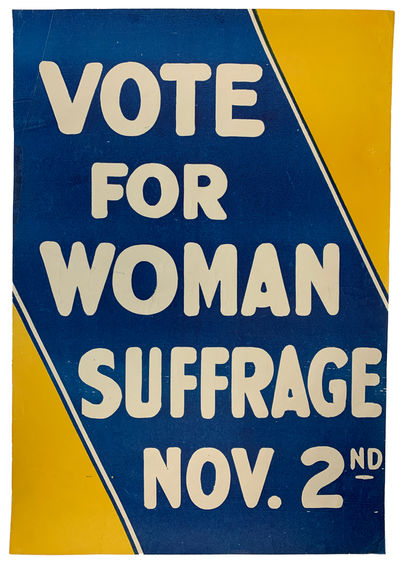1915 · [New York]
by [WOMEN’S SUFFRAGE]
Woman's Suffrage failed in all three states that held suffrage referenda on November 2, 1915: New York, Pennsylvania, and Massachusetts. [WOMEN'S SUFFRAGE].
"Vote for Woman Suffrage Nov. 2nd." [New York, 1915]. 1 p., 13¾ x 20 in.
Historical Background
On November 2, 1915, male voters rejected women's suffrage by a majority of 58 percent in New York, 53% in Pennsylvania, and 64.5% in Massachusetts. Undaunted, the American Woman Suffrage Association continued to press their case. When asked how long the triple defeat would delay their next attempt, Anna Howard Shaw replied, "Until we can get a little sleep. The fight will be on (truncated)
"Vote for Woman Suffrage Nov. 2nd." [New York, 1915]. 1 p., 13¾ x 20 in.
Historical Background
On November 2, 1915, male voters rejected women's suffrage by a majority of 58 percent in New York, 53% in Pennsylvania, and 64.5% in Massachusetts. Undaunted, the American Woman Suffrage Association continued to press their case. When asked how long the triple defeat would delay their next attempt, Anna Howard Shaw replied, "Until we can get a little sleep. The fight will be on (truncated)



